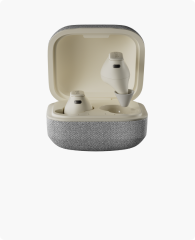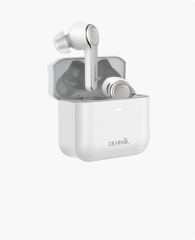Have you ever wondered if hearing and vision could merge? In other words, can you imagine "hearing" colors or "seeing" sounds? This might sound like something out of a sci-fi novel, but in reality, it's a genuine sensory phenomenon known as chromesthesia. So, what is chromesthesia? What is its definition? How does it differ from other types of synesthesia? Today, we'll dive into the world of chromesthesia, share some chromesthesia examples, and help you better understand this fascinating auditory experience.
🚀 Navigate This Post
You may also be interested in:
- Dog Not Responding to Your Voice? Here’s What You Need to Know About Dog Hearing Aids!
- Doctors Warn: Stop Using Cotton Swabs! Here’s How to Remove Earwax Safely
- Can Hearing Loss Be Reversed? Tricks to Get Better Hearing
Part 1: What is Chromesthesia?
Chromesthesia is a unique form of synesthesia, where certain people automatically associate sound with color. In other words, they experience hearing colors rather than just hearing sounds. For example, someone might perceive a violin's sound as a soft blue, while a drumbeat might appear as deep red.
1. Chromesthesia Definition
From a scientific perspective, chromesthesia is a neurological phenomenon involving heightened interaction between different sensory areas of the brain. Typically, the auditory cortex and visual cortex are more interconnected than in the average person, leading them to automatically experience visual perceptions when stimulated by sound. But how does this compare to general synesthesia?

2. Chromesthesia vs Synesthesia
Synesthesia is a broader concept that refers to one sense involuntarily triggering another. For instance, some people see colors when they look at letters or numbers (known as "grapheme-color synesthesia"), while others may hear music when tasting food. Chromesthesia, however, is a specific subtype of synesthesia that focuses on the connection between sound and color.
Part 2: Real-Life Examples of Chromesthesia
To better understand the impact of chromesthesia, let's look at some real-world chromesthesia examples.
1. The Fusion of Music and Color
Many musicians have reported experiencing chromesthesia. For example, the famous composer Franz Liszt would instruct his orchestra to "make the sound more blue" or "play with a redder tone." While these descriptions might seem strange to most people, for those with chromesthesia, the experience of hearing colors is very real.
2. The Use of Sound-Color Perception in Film and Art
Some filmmakers and visual artists use the concept of chromesthesia to enhance their work. Many animated films, for instance, synchronize sounds with specific colors to provide viewers with a deeper sensory experience. This hearing colors and seeing sounds phenomenon makes audiovisual presentations more immersive and expressive.
Part 3: How Chromesthesia Relates to Hearing Health?
Chromesthesia, a type of synesthesia where sounds are perceived as colors, offers a unique perspective on hearing health. While it is a neurological condition rather than a hearing disorder, its relationship with auditory processing and perception provides interesting insights into the way we experience sound.
1. Heightened Auditory Sensitivity
Individuals with chromesthesia often experience heightened sensitivity to sound, where slight changes in pitch or tone can trigger vivid visual experiences. This heightened awareness can be a double-edged sword—on one hand, it allows for deep appreciation of music and speech nuances, but on the other, it may lead to sensory overload in noisy environments. Similarly, people with hearing loss sometimes struggle with distinguishing speech in background noise, emphasizing the need for clarity in sound processing.

2. Emotional and Cognitive Impact
Hearing loss can impact emotional well-being, often leading to frustration or social withdrawal. In contrast, chromesthesia is sometimes linked to enhanced emotional engagement with sound. Ensuring good hearing health through the best over-the-counter hearing aids allows individuals to continue experiencing the richness of auditory perception, whether it’s music, conversations, or environmental sounds.
For those looking to fully engage with the world of sound again, selecting the right hearing aids is crucial. Devices like Cearvol hearing aids not only help users regain clear hearing but may also allow them to re-experience the richness of sound-color perception.
Part 4: Other Auditory Phenomena Compared to Chromesthesia
While chromesthesia is a unique form of synesthesia where sounds trigger color perceptions, there are other auditory phenomena that affect how people perceive sound. Some of these conditions, like musical ear syndrome (MES) and hear crackling in my ear, highlight different ways the auditory system can create unexpected or unusual experiences.
1. Musical Ear Syndrome (MES) – Auditory Hallucinations
Musical Ear Syndrome is a condition where individuals hear phantom music or voices, often when there is no external sound source. Unlike chromesthesia, which is a neurological trait rather than a disorder, MES is typically linked to hearing loss. It occurs when the brain compensates for missing auditory input by generating its own sound patterns, similar to how the brain fills in gaps for vision loss in Charles Bonnet Syndrome.
People with MES may hear classical music, instruments, or even choirs, and while these sounds can be pleasant, they can also become intrusive. Unlike chromesthesia, which enhances sound perception by adding a visual component, MES introduces entirely new auditory experiences that do not exist in the environment.

Diamond X1 - Best Hearing Aids with Bluetooth
Newcomer Price
$249.99 $309.99
- ✔ Adaptive sound modes for clear hearing.
- ✔ Bluetooth for calls & streaming.
- ✔ App-controlled, customizable adjustments.
- ✔ Rechargeable & fast charging.
- ✔ Ideal for mild to moderate hearing loss.
2. Hearing Crackling Sounds – Ear Pressure and Eustachian Tube Dysfunction
Another auditory phenomenon some people experience is a crackling or popping sound in the ear, often related to Eustachian tube dysfunction (ETD). The Eustachian tube helps regulate air pressure in the middle ear, and when it becomes blocked or inflamed, it can create unusual noises, such as crackling, popping, or clicking.
Unlike chromesthesia, which is a stable neurological trait, ear crackling is often temporary and linked to physical conditions like allergies, sinus infections, or sudden pressure changes (such as during air travel). While chromesthesia adds color to sound perception, crackling sounds result from mechanical issues within the ear, disrupting normal auditory processing.
Conclusion – Chromesthesia Makes the Auditory World More Colorful
Chromesthesia is a remarkable sensory phenomenon that allows certain individuals to "hear colors," adding a unique layer to their music, art, and everyday experiences. While not everyone has this ability, we can all enhance our auditory perception by maintaining good hearing health.
If you're concerned about your hearing or want to improve your listening experience, choosing the right hearing aids is a great step forward. Whether or not you have chromesthesia, clear hearing allows you to fully appreciate the vibrant world of sound!








Leave a comment
All comments are moderated before being published.
This site is protected by hCaptcha and the hCaptcha Privacy Policy and Terms of Service apply.